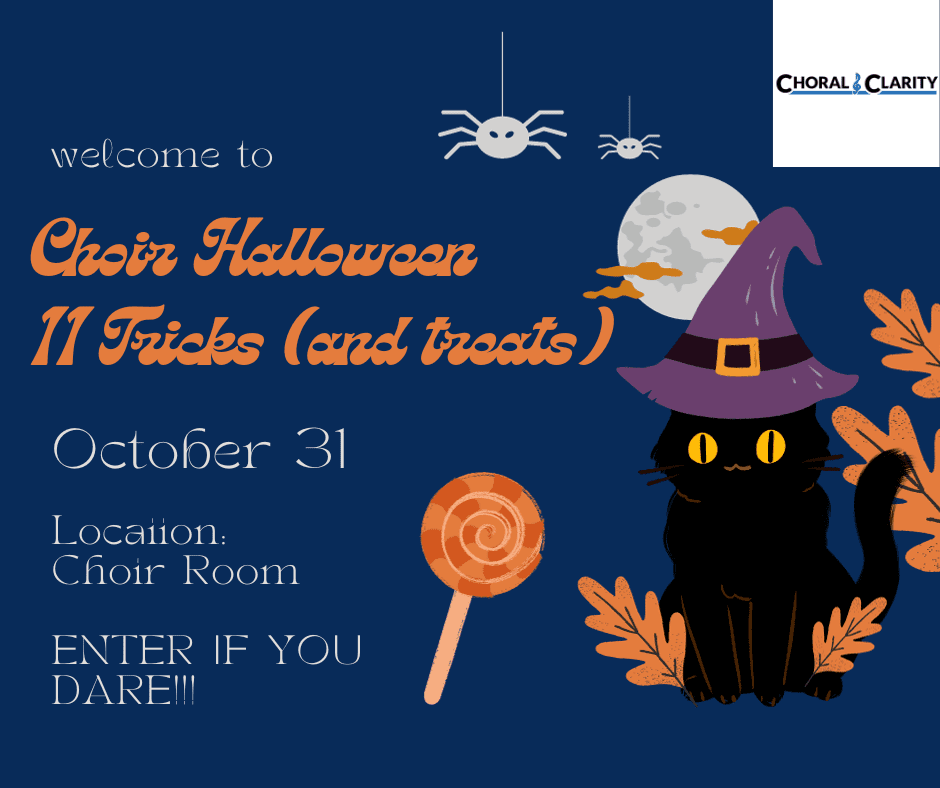If you’ve always wanted to have a choir filled with singers who can sight-sing, this blog post is for you! Whether your program is filled with brand new singers, a mixed of new and experienced singers, or a select ensemble, we can train our students to be literate and independent musicians. Sight-singing in a choir is really the concept that all students are independently working…….together.
If all students become great sight-singers, rehearsals will move faster, students will remain engaged, and the music-making process will occur sooner.
Here are the 7 Keys to Having Awesome Sight-Singers Throughout Your Choir:
The 8 Steps to Prepare ALL Students to Sight-Sing
1. Believe all students can and should learn to sight-sing
We must truly believe that teaching literacy and vocal independence is an important part of our job. Our students should be learning more than just the “alto part” to fifteen songs through the year. They should be developing into fine independent musicians. This process begins with literacy and sight-singing.
2. Understand the 6 Reasons Many Students Aren’t Able to Sight-Sing
Many teachers expect students to jump into sight-singing without recognizing deficiencies in both their skill-set and their mind-set. My blog, 6 Reasons Why Your Singers Can’t Sight-Sing, breaks down these reasons and begins to formulate a process of how to overcome these obstacles.
6 Reasons Why Your Singers Can’t Sight-Sing
3. Follow The 8 Steps to Prepare ALL Students to Sight-Sing
This involves developing the three main sight-reading skills independently: ear-training, note-reading, and rhythm labeling/tapping. Each must be focused on separately, and in stages, before expecting students to be able to conceptualize the art and skill of sight-singing. By separating each skill and following logical steps we become better equipped to recognize and address specific deficiencies, while cultivating the proper growth in each independent skill. My blog, The 8 Steps to Prepare ALL Students to Sight-Sing, sets a clear plan.
An example of why the separation of skills matter:
I currently have a student with perfect pitch in my high school choir. When he performs the exercises on my aural training sheet, he is almost always perfect. When Sight Reading Factory generates an 8 measure sight-singing example with moderately difficult rhythms, his pitches become less accurate. This student’s focus on rhythm impedes the natural strength of his perfect pitch. If we hadn’t performed these three skills independently, it would appear that this student struggles to find basic intervals.
Try SIGHT READING FACTORY and save 10% using code: choralclarity
4. Sight-Sing Every Day
I used to write an 8 measure exercise on my Smart Board every day before class and have the students sing through it directly after the daily warm-up. Now that I have upgraded to the 21st century, I use Sight Reading Factory, which instantly generates endless sight-singing examples that meet my specification. I keep SRF running all day long, and always have endless sight-singing examples ready to go. Prior to using this relatively program, I would have only been prepared with one daily example. Now my students perform at least 3 examples daily. I even have the examples aligned with the highest level of New York State Standards, so my students will have practiced hundreds of examples prior to their individual solo festivals in the Spring.
The Best Ear-Training Exercise You Will Ever Use
5. Hold students individually accountable
This begins with the The 8 Steps to Prepare ALL Students to Sight-Sing, but continues into sight-singing. Once students have developed the skills to be able to sight-sing at a beginning level, we need to encourage practice and assess their growth. The best way that this can be accomplished is by having students practice and perform their assignments at home, while we are able to continually assess their progress.
Fun Halloween Round for 2, 4, or 8 parts – tongue twister!! listen/download now
There are two programs that I recommend for this: Smart Music and Sight Reading Factory.
Sight Reading Factory’s strength is its ease of use for both the teacher and students, along with it’s relatively low cost (with the choral clarity code it costs $31.50 for a teacher and as low as $1.80 per student). Both programs send out sight-reading examples to students at home that they perform through their computer’s microphone at home and then send back to the teacher. While I swear by Sight Reading Factory for classroom use, I use Smart Music for weekly homework assignments with my students. Smart Music is difficult to learn how to use, and way more expensive per student, but there are a few functions that are incomparable to any other program that I know of on the market.
When a student is sent an assignment, Smart Music grades their performance in real time, marking wrong notes and rhythms in red. Students can perform their assignment over and over again while recognizing their progress. They can keep all takes and when they are finally happy with their score, they can submit a specific take to their teacher. The teacher receives the ALREADY GRADED assignments with the opportunity to listen and/or modify grades. Students are extra motivated because they want to earn a high score, which means many of them choose to practice over and over again before submitting. On the downside, there is just one book within all of Smart Music that I use for Sight-Singing (90 Days to Sight-Singing Success).
6. Have a year-long plan for skill development
Just like the 8 steps to prepare students to sight-sing, there needs to be a year-long progression in sight-singing skills. This may involve using a method book, but it would be helpful that the method book connects directly to the daily sight-singing examples on the board. For new teachers at the secondary level (middle school or high school), or teachers who continually have new students who are learning from scratch, I highly recommend S-Cubed.
S-Cubed, created by Dale Duncan, is a sight-singing system that provides a years worth of instruction to beginning students along with the support and guidance directly to the teacher prior to each lesson. Dale is a master middle school teacher, and links S-Cubed owners to videos of him teaching each specific lesson just before you go into the classroom and teach that same lesson. You are paying for a proven curriculum, all of the resources for your students, and all of his hands-on training videos. Unlike the other two programs that I mentioned, you will learn how to teach sight-singing and will learn how to be sequential with your approach. Also, unlike Smart Music and Sight Reading Factory that offer annual subscriptions, S-Cubed is a one-time purchase that can be used forever.
I know there are so many teachers out there who are fearful of teaching sight-reading. Dale essentially holds your hand every step of the way. Dale has graciously offered to discount his program significantly for Choral Clarity Blog readers until October 13th; If you would like to save $50 off his program, click here for the details.
Check out Dale Duncan’s S-Cubed $50 Off Promo for Choral Clarity Blog Readers.
7. Choose music that lends itself to easy reading
If your students are developing solid reading skills, it would be helpful to choose some choral repertoire that is easily readable. At the high school level, there are so many four-part a-cappella pieces that remain in one key from start to finish, have relatively simple rhythms, and are completely diatonic. When learned sight-singing skills become directly applicable to learning songs quickly, students become super-motivated. There are several high-quality pieces my self-selected choir is currently performing that follow these guidelines. I have also written several in my collection that fit this bill: Peace (SATB), Answer Me When I Call (SATB), A Clear Midnight (SSAA). Some great examples by other contemporary composers are: Totus Tuus by Michael John Trotta and O Lux Beatissima by Howard Helvey. I hope to provide a more detailed list in the near future!
Fun Halloween Round for 2, 4, or 8 parts – tongue twister!! listen/download now







Leave A Comment